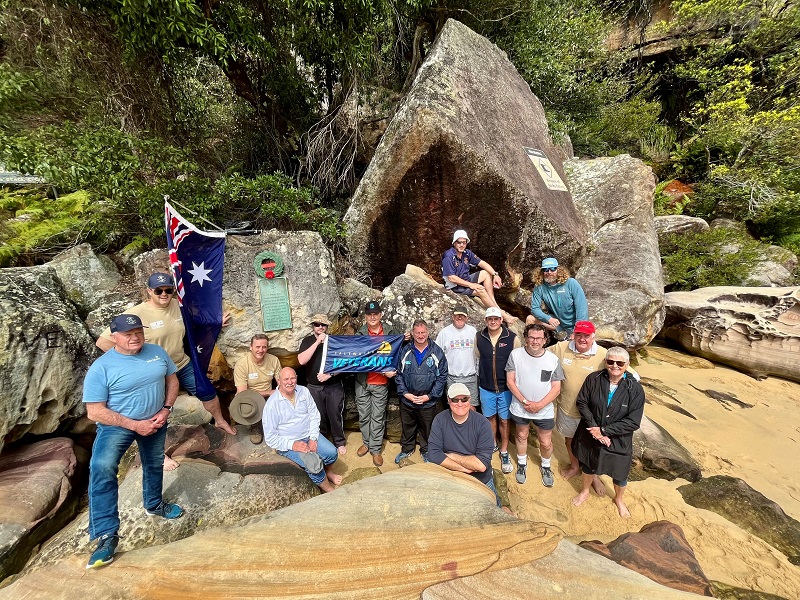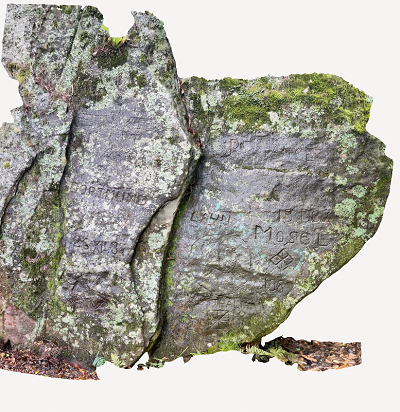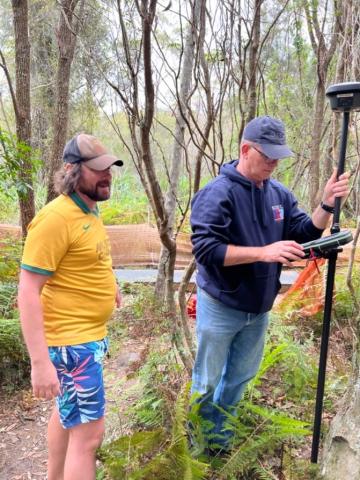Operation Digger – archaeology and veteran wellbeing
By Stirling Smith
Coming from a long line of family members who served in the defence forces, I grew up with a keen interest in the military and in military history. Although I was interested in joining the Army full-time upon leaving school, I followed a different path into archaeology and heritage.
Although archaeology was my chosen career, I was still keen to join up as a reservist and in 2010 I was posted to the 28 Field Battery based at Dee Why. This allowed me to serve in the Australian Defence Force (ADF) and continue my civilian career. Often, I’d find that the two careers would combine, especially when undertaking archaeological surveys or excavations of ex-military heritage sites. When working on these sites I would always try to include ex-ADF people in the work as much as possible. This provided me with invaluable firsthand knowledge from the veterans, while they would often get a sense of belonging and involvement.
The inclusion of veterans in archaeological and heritage projects is by no means a new idea and there are several well-established programs that have run for many years overseas. Operation Nightingale for example is a UK-based initiative that uses archaeology as a means of aiding the recovery of service personnel wounded in recent conflicts. An evaluation of the program based on standardised psychological measures demonstrated ‘improvements in wellbeing among veterans participating in fieldwork … including a reduction in the occurrence of anxiety, depression and feelings of isolation and a greater sense of being valued’ (Everill et.al. 2020).
Being aware of the success of these programs, in 2021 I established Operation Digger. Operation Digger is a community-based program that actively involves veterans in the recording of archaeological and heritage sites throughout NSW. I run this as a volunteer with the generous support of other heritage professionals and veterans’ organisations. The information gathered by Operation Digger projects is provided free of charge to site owners, archaeologists, local councils and government agencies to assist them with heritage management and interpretation. The health and wellbeing of veterans is a core focus of Operation Digger and is front of mind when planning site-work, including consideration of physical abilities and mental health.
The first fieldwork project undertaken by Operation Digger was an archaeological survey of Camp X. Camp X was the secret Second World War training camp used to train Operation Jaywick operatives for a highly secretive seaborne raid on ships moored in Japanese-occupied Singapore in 1943. In April 2022, Operation Digger volunteers with the assistance of veterans, in particular former Commando members from the Australian Special Forces Alliance, visited the former campsite at Refuge Bay on the Hawkesbury River, north of Sydney. As one of the goals of Operation Digger is to assist veterans’ physical wellbeing, ex-military kayaks were used to paddle the 12-kilometre return trip from Cottage Point to Refuge Bay (Figure 1). As the campsite is located within the Ku-ring-gai National Park, the results of the survey have been provided to the NSW National Parks and Wildlife Service to assist them in interpreting and managing this significant site.
In September last year, Operation Digger also assisted Saltwater Veterans members to undertake a site visit to Camp X for a memorial service for members of Operation Jaywick who trained at the camp but were later killed in Operation Rimau – the follow-up raid on Singapore Harbour (Figure 2) in which all participants tragically died.
Operation Digger participants have also undertaken the first archaeological survey of a former German Labour Front, or Deutsche Arbeitsfront (DAF) at Deep Creek, Narrabeen Lakes. The camp was established in 1937 to provide a recreational facility for the crews of visiting German ships while also keeping them away from the perceived corrupting influences of the mainly left-leaning waterside workers in Sydney. The visiting crews engraved the names of their ships into the rocks with other nationalistic symbols (Figure 3). The recording project was undertaken in collaboration with the support of the University of Sydney’s Archaeology Department, which provided advanced survey equipment and professional archaeology staff who trained veterans in the use of some of the equipment (Figure 4)
In addition to support from Sydney University, the NSW National Parks and Wildlife Service, Saltwater Veterans, the Australian Special Forces Alliance and the Mosman RSL Sub-branch (of which I am a member) have actively supported Operation Digger by circulating information about the program, while its members have participated in our surveys. The Anzac Memorial at Sydney’s Hyde Park and DVA have also provided contacts and advice about potential funding. Discussions are underway with veterans’ dive program ScubaGym about potential maritime archaeology survey projects in the future.
To get in touch, email me on operationdigger@gmail.com

Photo above: Australian Special Forces Alliance members and former Commandos at Camp X (Image credit: Stirling Smith)

Photo above: Memorial Service for Operation Jaywick and Rimau (Image courtesy of Saltwater Veterans)

Photo above: Figure 3: 3D Scan or engravings of ships names at Deep Creek (Image credit: Stirling Smith)

Photo above: Associate Professor James Flexner from Archaeology at the University of Sydney (left) demonstrating the use of advanced survey equipment (Image credit: Stirling Smith).
